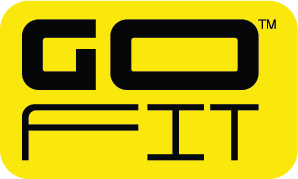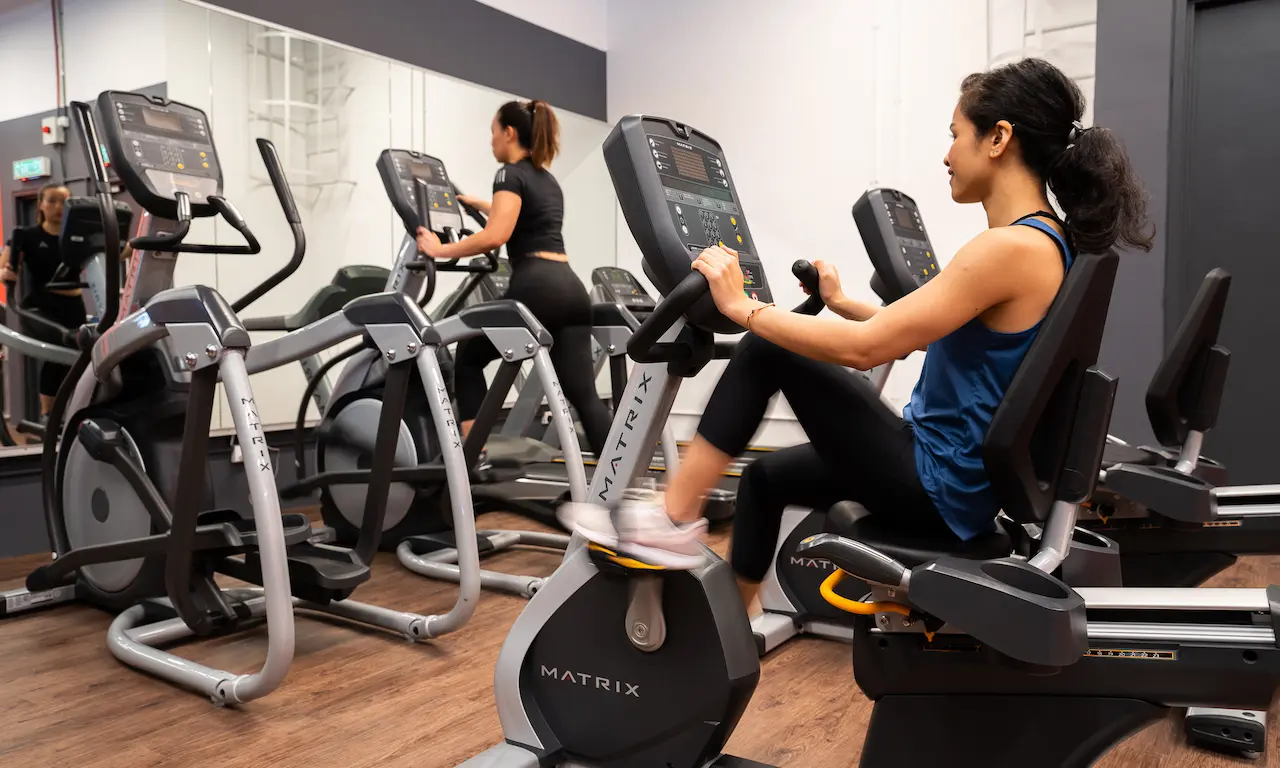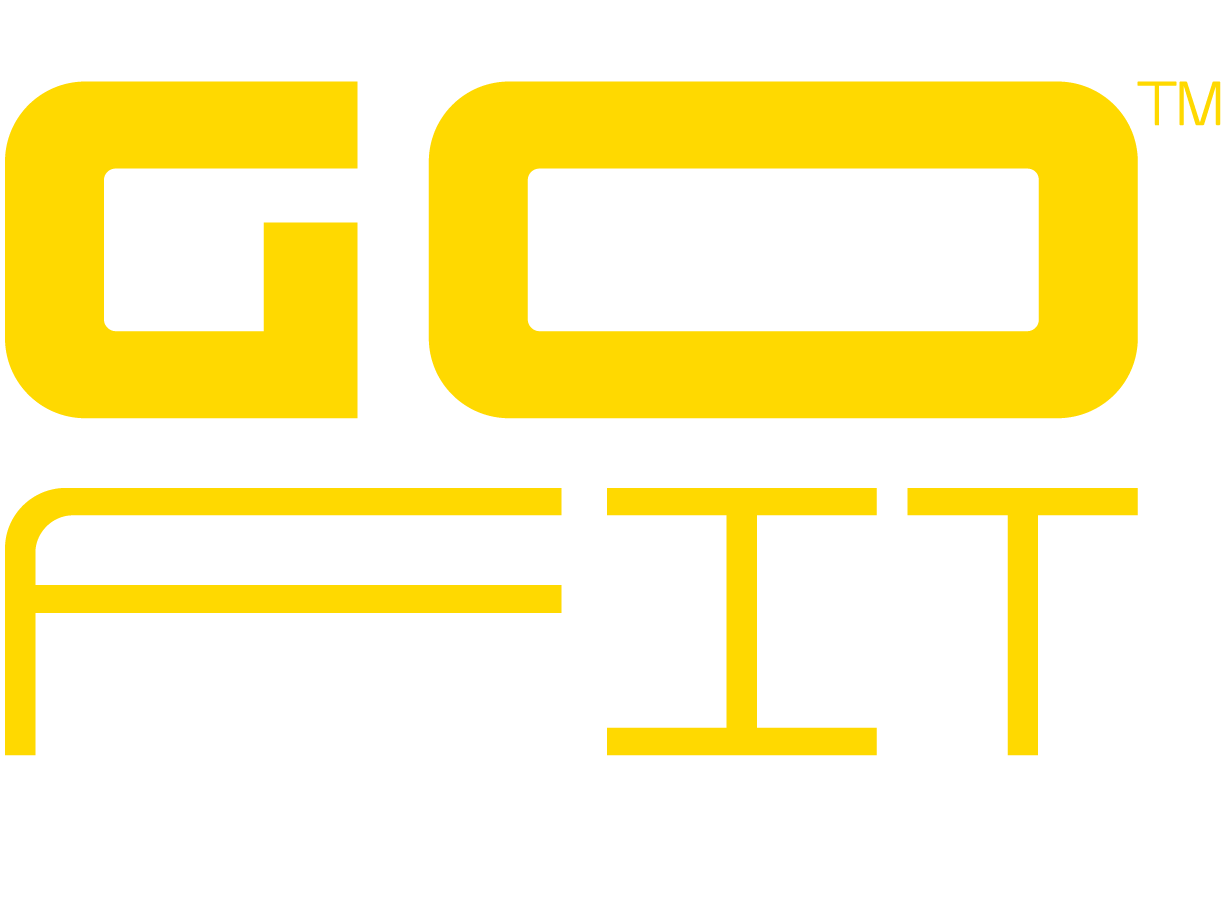If you’re visiting a gym for the first time or stepping back into it after a long break, and are feeling intimidated – this beginner’s guide to gym equipment is for you! With new equipment, weights, and gadgets, it’s easy to become overwhelmed and feel lost. If this sounds like you, don’t worry – we got you!
In this guide, we’ll introduce you to some of the most common gym equipment, explain how to use each one effectively, and boost your confidence as you start your fitness journey.
- Cardio machines
- Strength training machine
- Free weights
- Functional training equipment
- Stretching and recovery equipment
1. Cardio Machines

Cardio machines are excellent for warming up, burning calories, and promoting cardiovascular health. Here are the most common types of cardio machines you’ll find in gyms:
Treadmill: One of the most popular cardio machines, treadmills are easy to learn and use! Using a treadmill allows you to walk, jog, or run indoors. While functions and programs may vary across different treadmill brands, majority of them will have a ‘Quick Start’ button that will simply get the treadmill belt moving. You can adjust the speed and incline to customise your workout intensity. When starting the treadmill, straddle your feet across the sides of the deck (sides of the treadmill) before turning it on. Always increase its speed slowly.
Elliptical Trainer: This equipment provides a low-impact workout that simulates running. It’s gentler on the joints than a treadmill and often includes handles to work your upper body and offer some stability.
Stationary Bike: Stationary bikes are great for cardiovascular workouts, especially for those who find walking or running boring and tedious. It’s also gentler on the joints. Not all bikes are equal! There are 2 types: Upright bikes resemble conventional bicycles, while recumbent bikes have a reclined seat that offers back support.
Rowing Machine: Oof! Not everyone’s cup of tea but the rowing machine is an effective cardio worker, offering a full-body workout! The rowing machine works both the upper and lower body, including your core. It mimics the motion of rowing a boat, making it ideal for increasing endurance and muscle strength. Rowing does require a little technique so if you’re unsure, simply reach out to a friendly staff member on the floor for tips!
Stair Climber: Also known as a stair stepper, stair mill or power mill, this machine simulates the motion of climbing stairs. It’s perfect for building lower-body strength and endurance. Similar to a treadmill, majority of these machines will have a ‘Quick Start’ button that will simply get the stairs moving. Hold on to the rail bars on either side for support and stability, but feel free to let go when you get comfortable.
2. Strength Training Machines

Strength training machines are easily identifiable. These are the majority of equipment that you see in most gyms. They’re designed to target specific muscle groups and are great for beginners because they guide your movement and reduce the risk of injury. These machines are often pin-loaded machines which means it uses a stack of weight plates and a pin to adjust the level of resistance.
Here are a few common gym equipment:
Chest Press: This machine works the chest, shoulders, and triceps. It involves pushing a set of handles away from your body while seated. The seat height is easily adjustable using a lever beneath the seat.
Lat Pulldown: Designed to target the back muscles, this machine involves pulling a bar down towards your chest while seated.
Leg Press: This machine targets the quadriceps, hamstrings, and glutes. While seated, you push a weighted platform away from you using your legs.
Leg Curl and Leg Extension: These machines work the hamstrings and quadriceps, respectively. Leg curls involve bending your knees against resistance, while leg extensions involve straightening your legs against resistance.
Cable Machine: A versatile piece of equipment, the cable machine uses adjustable pulleys and weight stacks to perform a variety of exercises, such as cable curls, tricep pushdowns, and chest flies.
Read also: Your Guide To Strength Training : Benefits, Tips, Lingo + Workouts
3. Free Weights

Mostly all gyms will have an area dedicated to free weights. These would look like open spaces with racks of weights which can include dumbbells, barbells, and kettlebells. Free weight exercises need greater control and stabilization than machine exercises, which makes them perfect for building general strength and coordination.
Dumbbells: Dumbbells are adaptable weights that work well for lunges, shoulder presses, and bicep curls, among other workouts. Because they come in a range of weights, they are appropriate for all levels of fitness. When you’re just starting out, always start with the lower weight to get used to the movement before hitting the heavier weights.
Barbells: A barbell is a long bar with weights attached to both ends. It is used for exercises like squats, deadlifts, and bench presses. Barbells are a great tool for building strength and facilitating heavier lifting. However, before using barbells it’s important to nail your form and technique to prevent any injuries from happening.
Kettlebells: These are cannonball-shaped weights with a handle. They’re used for dynamic exercises like kettlebell swings, goblet squats, and Turkish get-ups, which help build strength, endurance, and stability.
4. Functional Training Equipment

Functional training equipment is designed to improve overall body strength, stability, and coordination by mimicking everyday movements.
Medicine Balls: These weighted balls are used for a variety of exercises, including slams, throws, and twists, to build strength and power.
Resistance Bands: These are stretchy bands that provide resistance during exercises. They’re great for improving strength, flexibility, and mobility and can be used for exercises like bicep curls, squats, and shoulder presses.
Battle Ropes: These heavy ropes are used for dynamic exercises that involve waving, slamming, or whipping the ropes. They’re excellent for building upper body strength and cardiovascular endurance.
Bosu Ball: A Bosu ball is a half-ball with a flat platform on one side. It’s used for balance and stability exercises, such as squats, lunges, and push-ups.
5. Stretching and Recovery Equipment

Stretching, rest and recovery are critical components of a well-rounded fitness program. Not only will it help with injury prevention, prioritising time for rest and recovery may also help improve your training. Here are some tools to help you stretch and recover:
Foam Rollers: These cylindrical tools are used for self-myofascial release, a form of self-massage that helps release muscle tightness and improve flexibility.
Stretching Straps: These straps aid in stretching exercises, allowing you to achieve a deeper stretch and improve flexibility.
Yoga Mats: A yoga mat provides cushioning and support for floor-based exercises, such as stretching, yoga, or Pilates.
Final Tips for Gym Beginners
Start Slowly: If you’re new to the gym, begin with lighter weights and lower intensity. Focus on learning proper form and technique before progressing to heavier weights or more advanced exercises.
Ask for Help: Don’t hesitate to ask gym staff or a personal trainer for assistance if you’re unsure how to use a piece of equipment. Most gyms offer introductory sessions or orientations to help new members get acquainted with the equipment.
Warm-Up and Cool Down: Always start your workout with a warm-up to increase blood flow and prepare your muscles for exercise. Similarly, finish with a cool down to reduce heart rate and aid in recovery.
Listen to Your Body: Pay attention to how your body feels during and after workouts. If something doesn’t feel right or you experience pain, stop and consult a professional.
Understanding how to use gym equipment is critical for a safe and productive workout. By familiarising yourself with these basic machines and tools, you can confidently navigate the gym and maximise your training regimen. Remember, everyone starts as a beginner, so don’t be afraid to take your time, ask questions, and learn as you go.






